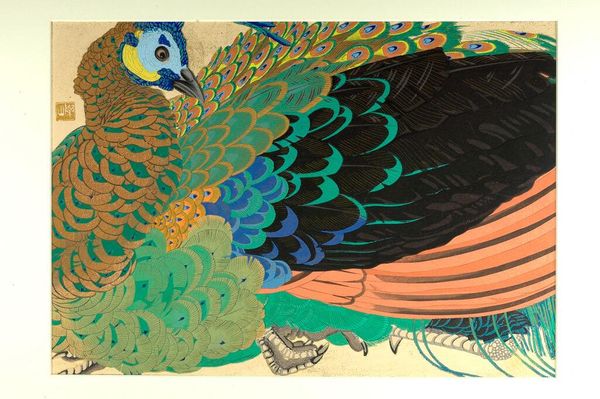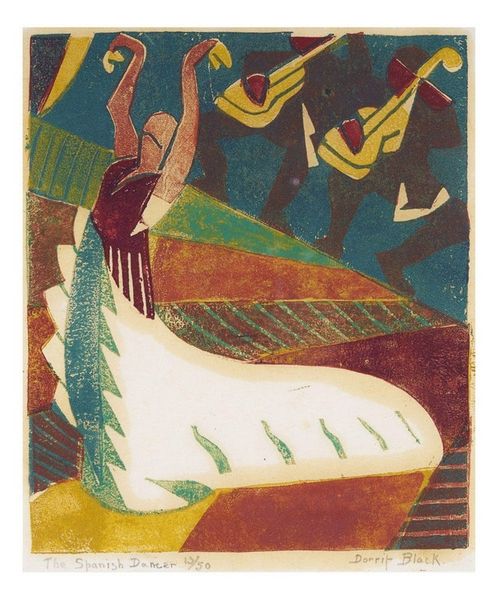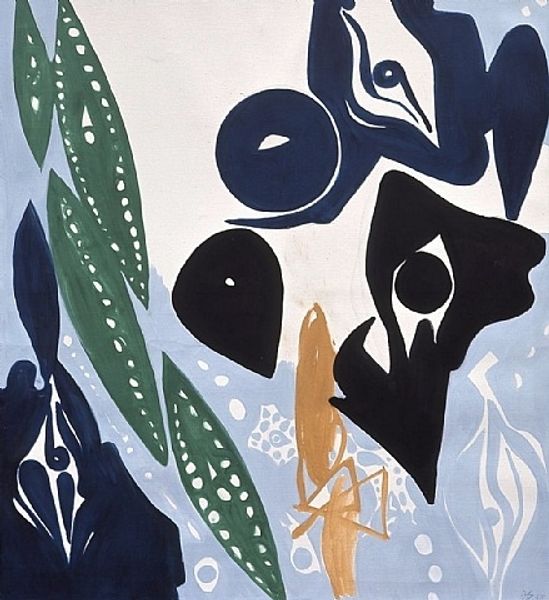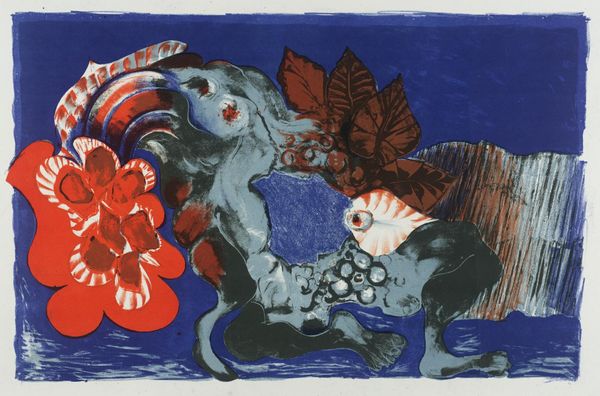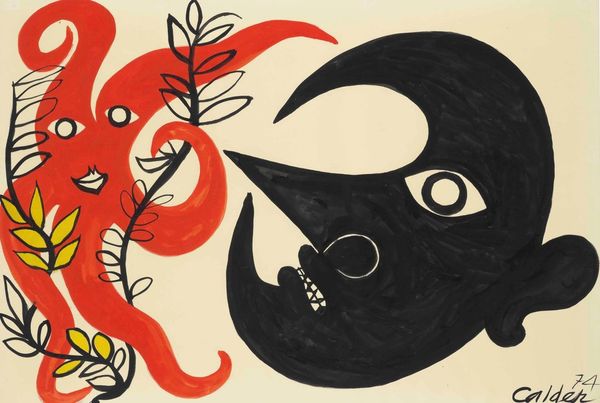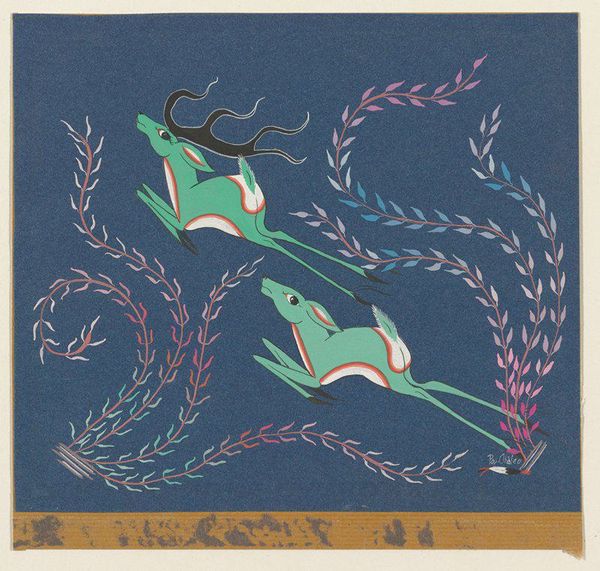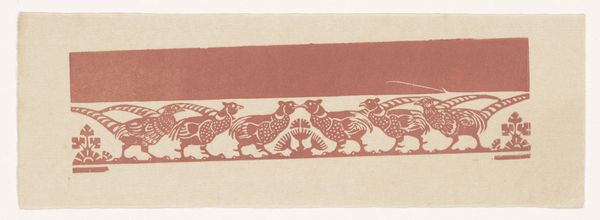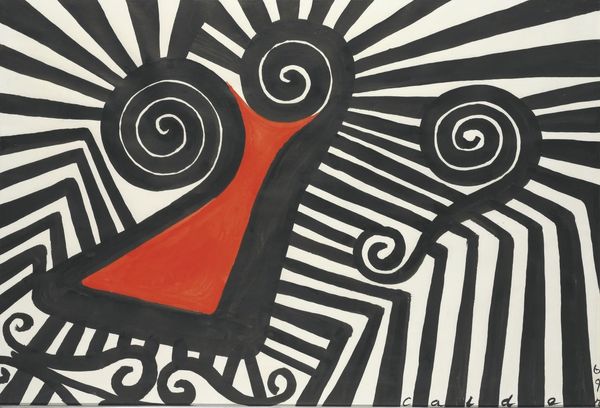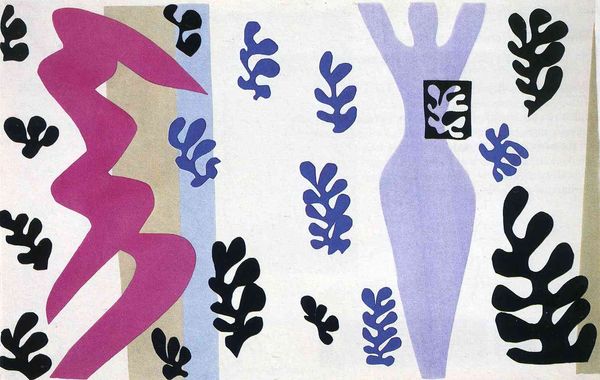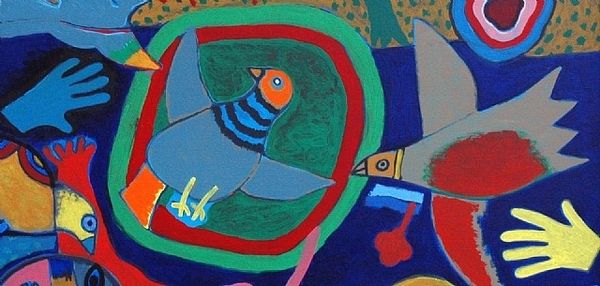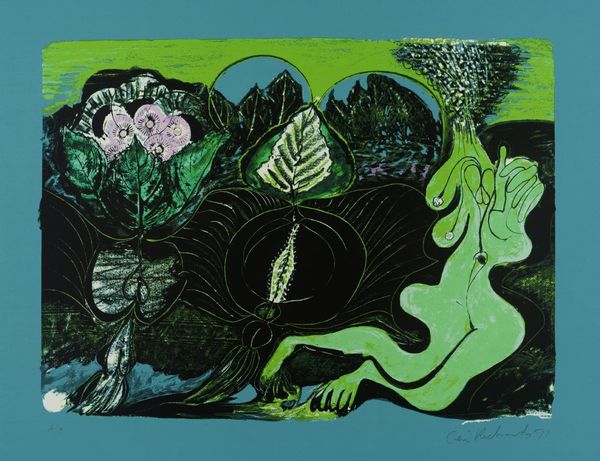
drawing, acrylic-paint
#
drawing
#
outsider-art
#
acrylic-paint
#
figuration
#
folk-art
#
naïve-art
#
abstraction
Dimensions: sheet: 45.72 × 60.96 cm (18 × 24 in.)
Copyright: National Gallery of Art: CC0 1.0
Curator: Here we have Nellie Mae Rowe's "Fish," created in 1980 using acrylic and drawing media. The initial impression is quite striking, wouldn't you say? Editor: It is! I’m immediately drawn in by its whimsical quality. The contrasting textures and seemingly unrefined, yet rhythmic lines and shapes give off an impression of joyful folk simplicity, of the southern vernacular. The perspective feels playfully flattened, a visual world unto itself. Curator: Indeed. Rowe’s employment of naive perspective, coupled with a near-symmetrical composition, organizes a vibrant balance. The fish, a rather sizable form, is centered horizontally, mediating between these stylized birds and fantastical flora, the whimsical polka dots uniting it all. Do you read anything into the patterning or the repeated visual elements? Editor: Given Rowe's life experiences as an African American woman living in the South during the 20th century, it would be useful to look beyond just visual aesthetics. Fish and birds often represent freedom or transformation in African American folklore and spiritual traditions. The almost dreamlike landscape could be her exploration and navigation of identity, culture, and place. Curator: That's a compelling interpretation. Rowe's approach to abstraction and figuration—particularly in her employment of color and shape—creates a liminal space where the mundane and the mythical blend. Observe how the vertical stripes on the fish and the plant-life mirror each other, echoing throughout. It generates a sense of internal logic specific to the artist's visual lexicon. Editor: And yet it's that very "internal logic" that might resist easy classification. Rowe wasn’t formally trained, so labeling her work "naïve art" flattens the political nuances behind her expressive output and personal experiences in the rural South. Rowe cultivated a unique visual language steeped in personal experience and the Black vernacular tradition. Curator: Precisely. Her aesthetic choices become less about representational accuracy and more about emotional or psychological veracity. Editor: Ultimately, "Fish" is more than just an arrangement of forms and colors. It’s a window into Rowe’s unique interior world and its articulation within larger social and artistic contexts. Curator: A testament to the transformative potential when artistic vision circumvents convention, creating new modalities of seeing. Editor: Agreed. And hopefully prompts questions about whose vision is validated and whose remains marginalized within the accepted canon.
Comments
No comments
Be the first to comment and join the conversation on the ultimate creative platform.
